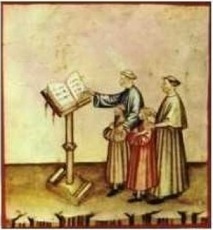
Francesco Stella, professeur à l’Université de Sienne à Arezzo, a réalisé un site entièrement consacré aux chants rythmiques non liturgiques écrits en latin du premier Moyen Age (IVe-IXe siècles). Ce site, intitulé CORPUS RHYTHMORUM MUSICUM SAEC. IV-IX. – SONGS FROM NON-LITURGICAL SOURCES, est accessible ICI.
The website is a textual and musical philological database of the earliest medieval Latin songs called Corpus Rythmorum Musicum. It presents for the first time, in print and in a digital format, texts along with the relevant music. It deals with the first Latin compositions in verses that are no longer quantitative, but rhythmic – that is to say based upon accentual and syllabic criteria. This tradition begins in the fourth century with the Psalmus responsorius of the Barcellona Papyrus and the Psalmus contra Donatistas by Augustine. It finds its first mature systematization in the Carolingian era before exploding a few centuries later into the outpouring of European lyric song (both in Latin and the vernacular) that reaches high points in texts such as the Carmina Burana up to the Fleurs du mal. From within this tradition, which forms the precursor to modern western poetry, the Corpus firstly collects those verses that have a musical tradition – that is to say those in which we find neumatic notation in the codices that record the songs ; we can define this material, in a certain sense, as the first « songs » from a European lyric tradition that have left a written trace.
Information obligeamment fournie par Marie Formarier.

